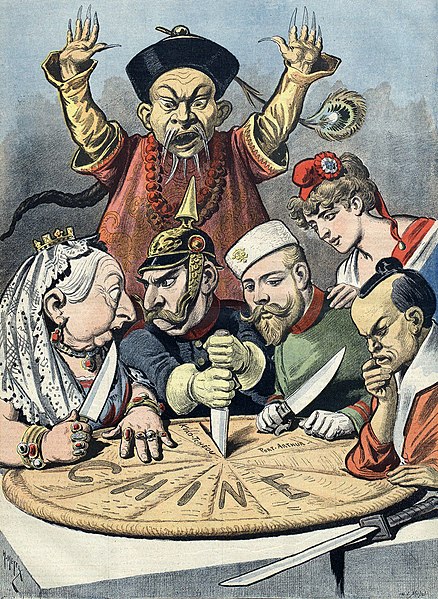The History and Understanding of Political Realism

Introduction
International Politics is like any other field of study. There are many different perspectives and schools of thought to try and explain it as a field of study. The most prominent school of thought is that of Realism. In other posts, I will explore other ideologies, but this post will focus on the pessimistic view that is Realism.
Thucydides
Realism has historic roots that some argue go back centuries. The beginning of Realism is usually associated with Thucydides, in the 5th century BC, in his history of the Peloponnesian War. Specifically, the negotiations between the strong Athenians and the weak Melians are the source of where Realism is said to have begun. Here I will give a simple synopsis of this conversation. The Melians, essentially, asked for the Athenians to leave them alone and to just go away. The Athenians suggested that they were dead set on conquering the Melians. In response, the Melians argued that the gods would be on their side because they were just, in this situation, and that they might be able to defeat the Athenians. The Athenians argued they needed to invade the Melians or else they would look weak and be taken advantage by other states. They also said that the gods would remain uninvolved because the strong conquering the weak is merely the nature of things. The famous quote used to explain this thought pattern is that, " the strong do what they can and the weak suffer what they must." To put another way, the strong have the ability to do as they desire, while the weak are forced through circumstance to do what they must to survive.
Early Modern History
This ideology is further advanced in early modern philosophy, with the likes of Niccolò Machiavelli in his famous work The Prince. At some point I will do a
more in-depth analysis of The Prince. As a brief description, he describes the concept of power in politics and how the "prince" can retain power. Realism also
gets a more in-depth interpretation by the philosopher Thomas Hobbes. In Hobbes' book The Leviathan he discusses his view of the state of nature. The state of
nature is essentially talking about a situation without, or before, government. It is opining on the question of, “what would you do if there was no manmade
laws or government to restrict people’s actions?” He describes it as a “ solitary, poor, nasty, brutish, and short” place that is full of anarchy. Pretty much
saying that without structure of some sort there would be chaos. In this state, the weak are dominated by the strong in a desire to uphold self-preservation.
This can be looked at further when discussing the international community.
With all that being said, Realism as a formal study, wasn’t truly created until after World War 2. Now that we have, more or less, discussed the history of Realism,
let's actually dig into what Realism truly is and the thought pattern behind it.
Power
If it hasn't been made entirely clear, Realism is mostly associated with power politics. While, there are a few different interpretations within Realism, which
will be further looked at later on in this post, there is a common thread to which most Realists agree on. These ideas include the importance of power, the state,
and the anarchic state of being associated with the international community. Let's explore each one of these concepts and a few theories created by Realists based
off their beliefs.
First, and most importantly, Realists' focus on power. Power in a classic sense is equivalent with military strength. However, a more nuanced
view of power is the ability to force or influence another's thoughts, actions, and/or mindset. In other words, would country B have joined a war or accepted terms
without the influence of country A? An example of this, in modern times, is to see the number of countries that signed off on condemning China over the situation
with the Uyghurs, and then backing off, or rescinding, their condemnation out of fear of economic retaliation from China. This is a call back to the strong have
the ability to do what they will, but the weak are forced into certain action based off the needs of their own survival. Actions in the international community or
foreign policy in general can be determined based off of the amount of power they hold in relation to others within the community, as well as, the desire to survive
within that community.
The State
This goes without saying, but Realists tend to see the state as holding the ultimate power. While Realists don’t discount that non-governmental organizations have influence or power, they believe that it pales in comparison to the power of the state. Afterall, the threat of an NGO or company is declaring strong condemnation and may amount to the NGO or company no longer working within a state. While, the strongest condemnation from a state against another state may result in a bloody war, which may result in the death of many people and destruction of infrastructure or homes.
Anarchic State
How could the international community accept such a politically chaotic world to exist? This leads to the fact that the international community is one of anarchy. This means that there is no higher authority than the many different states. Realists tend to use the concept of there not being a 911 or night watchman for the international community to explain this concept. If power is exerted on a weak country, what is going to happen, who is going to do the punishing? I am sure there are some that want to point to the United Nations (UN) as an example of a higher authority. To most Realists, however, this falls short of a global government authority. They see the UN as either entirely too weak to have any impact or believe the UN is controlled by powerful nations, using it as a means to display or exert their own power. After all, the UN only has five permanent members on its security council. The council being the only force that holds any true power within the UN. This is out of 193 member states. The simplest way to survive and display power is in a classic, and modern sense, to have the strongest military force.
The Security Dilemma
Today, the strongest military capabilities would, obviously, be nuclear weapons. This can cause a security dilemma. The scenario happens in a predictable way. Let's say I, as a state, am scared that the actions of my neighbors may result in my destruction or even the strangle hold of my ability to exert power or any other desires. The best way to ensure peace, from my neighbor's actions, is to build nukes. My neighbor, with a similar nuclear capability, will in turn make nukes to protect themselves from my actions. Since my neighbor is making nukes, I need to ensure they won't use their nukes, so I produce more nukes. This causes an arms race that never ends. Nukes may be replaced with AI or military size or anything else, but the fact remains that our militaries are growing and growing. This causes a build up until finally an event occurs and is either rightly or wrongly interpreted aggressively. Thus, a war is declared and perhaps millions die.
Thucydides Trap
This leads to the concept of the Thucydides trap and political polarity. The Thucydides trap is based on an old concept that argues when there is a rising power, war is almost always determined to happen between the old powerful country and the new rising power. The best way to understand why this happens is basically using the concept explained by the scenario given for the security dilemma. If I am powerful, why would I wait until it's too late to attack my neighbor who seems to only be getting stronger and stronger? I could attack them now and end a potentially large problem before it is too late to do anything about it. This brings us to understanding a concept Realists study called global polarity.
Global Polarity
Within the world there are many different kinds of powerful states. There are regional powers, great powers, but there is also the world powers or polar powers. The world powers create a polarity of power to which the world can be divided or be attracted to. There are three different types of polarities that Realists recognize and there are consequences for each of them.Unipolarity
The most basic kind of polarity is the unipolar world, where there is but one power. The best example of this would be after the fall of the USSR. There was only the USA left as being the sole world power. Out of the three different scenarios this is considered the most likely to be peaceful, with there being no true competition to speak of. This doesn’t mean it is completely peaceful, but rather relatively so, in comparison to the other possibilities. Issues such as human rights and morality become more of an issue concerning war, than during the other polar possibilities. However, this unipolarity is usually short lived because soon a rising power will come into the mix. Most political analysts today consider China to be the next rising power to challenge the US. Some suggest that this is a Thucydides trap waiting to happen.
Bipolarity
The next polar world that may exist is bipolar. This is a situation with two polar powers competing for power between each other. This is best exemplified by the Cold War years between USA and the USSR. This usually doesn’t result in a direct war between the two powers. Instead, it leads to proxy wars such as Vietnam, where military partners are funded or supplied to fight.
Multipolarity
The last polar world is considered the most dangerous. This is in the form of a multipolar world. The best example of this would be the state of the world leading up to World War 1. There are three or more polar powers competing with each other to try and out power their competitors. This will almost always lead to not only war, but a major conflict amongst powerful countries to try and reshape the power dynamics of the world to be in one of their favors. Before closing out this post, I want to shine a light on some of the subcategories within Realism itself.
Subcategories of Realism
Not all Realists focus on the same parts of the ideology, nor do they approach the ideology the same way. Realism can be categorized into Classical Realism, Neorealism, and Neoclassical Realism. These are not all the categories within Realism, but rather the most well-known categories. Don’t misunderstand, all the different kinds of Realists, by and large agree with each other on how the international system works. The major difference is the focus and importance they place on certain topics. Also, each of these categories deserve a lot more information than I am giving. This is only meant to be a very brief overview of each of them.
